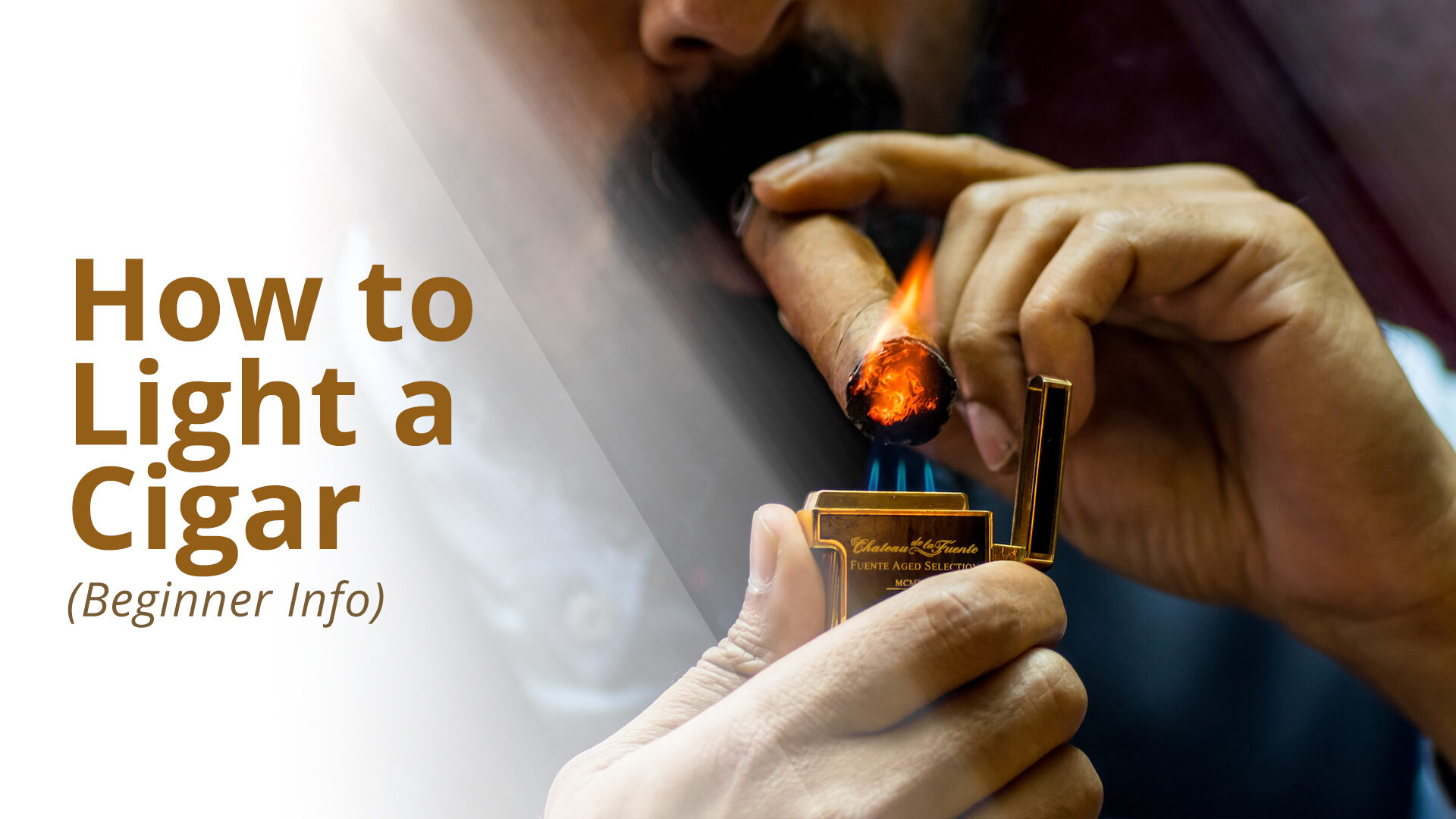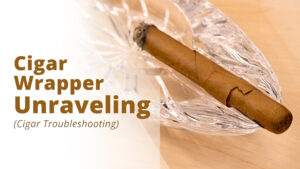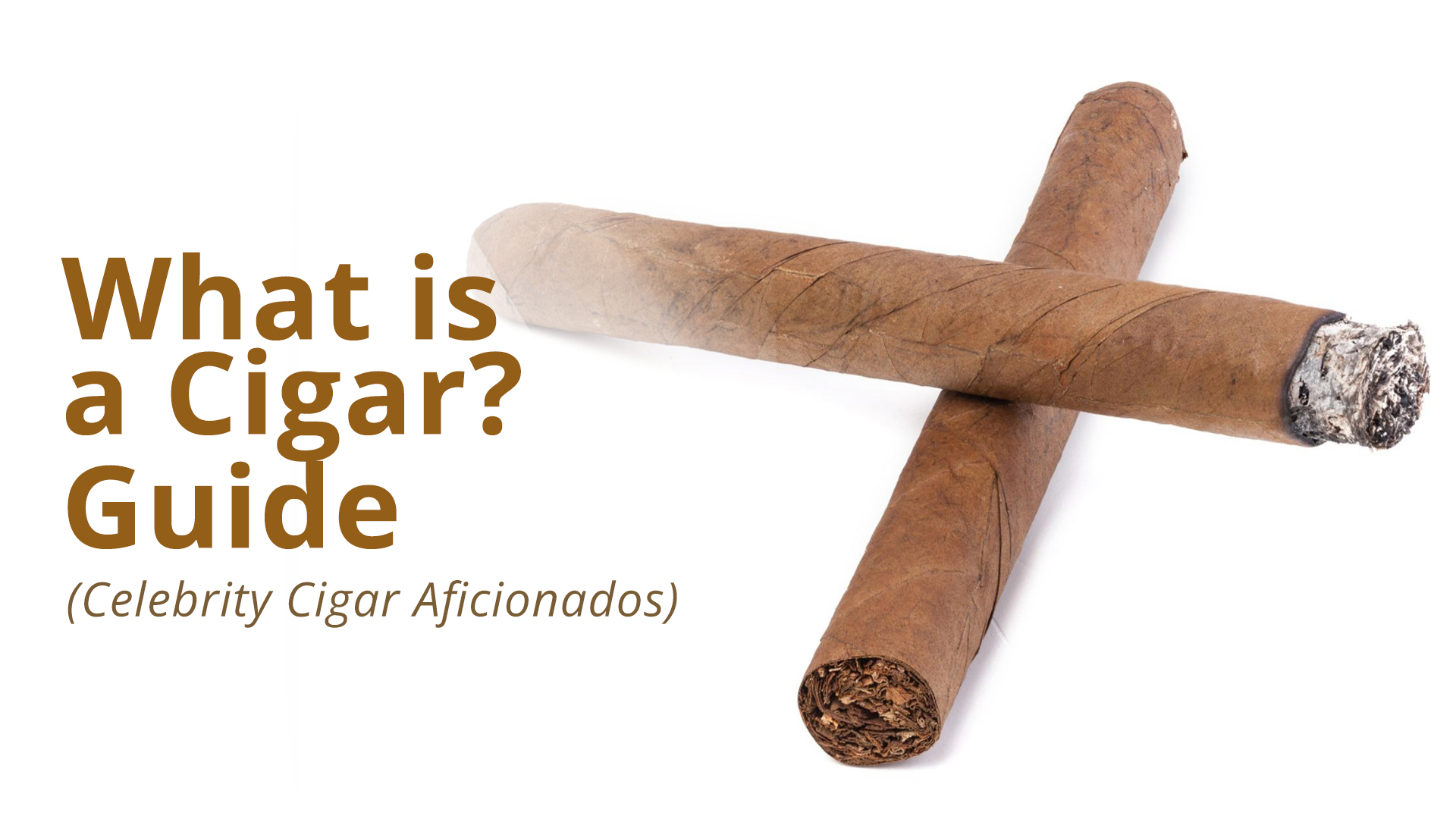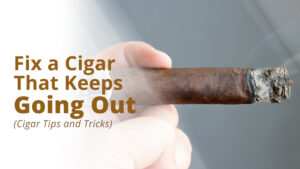Lighting a cigar like a true gentleman is the beginning of a pleasurable experience.
It’s always something to be savored rather than rushed.
There are different steps to ensure a properly lit cigar and avoid an uneven burn.
We’ll start with the basics and talk through exactly what to do.
Select a High-Quality Premium Cigar
Premium cigars are worth the investment. A well-rolled, carefully prepared, handmade premium cigar allows for an even burn.
Inferior cigars with low-grade binder and filler tobacco or an inferior wrapper can all contribute to irregular burns.
Therefore, investing in a full-bodied, premium stogie for occasional indulgence is better than regularly smoking lesser-quality cigars.
How to Light a Cigar
Lighting a cigar should be somewhat ritualistic.
Start with making a defined cut. To prepare your stogie, you can use a guillotine cut, punch cutter, or V-cutter.
If the cut isn’t prepared correctly, then it’ll cause an uneven burn simply due to that.
When lighting a cigar, all parts of the cigar can impart different flavors during the smoking experience.
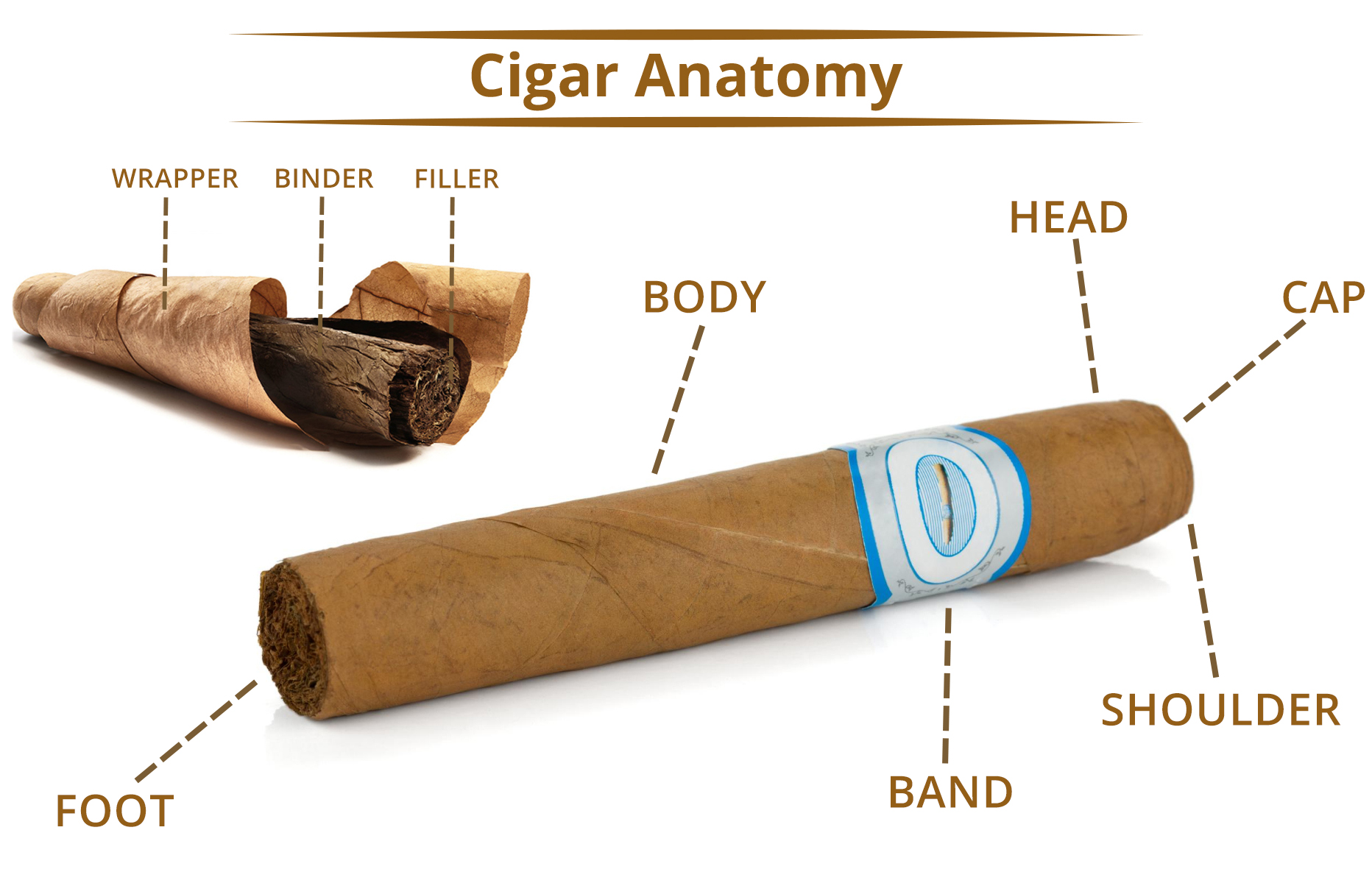
The wrapper, binder, and filler are what fills most of the cigar and work seamlessly together.
When lighting improperly and unevenly, this spoils it.
Also, without the cigar’s foot being fully lit, it will create problems where the cigar burns faster in one area but not elsewhere.
This becomes more of an inconvenience over time when partaking in a premium cigar.
The technical term for this in cigar smoking rooms is tunneling or canoeing.
Therefore, please follow our guide below to properly light a cigar. It saves so much trouble later!
Choose a Lighter
A butane lighter is the best option for outdoor smoking. It is less susceptible to high winds extinguishing the flame.
Using a lighter to light a cigar needs plenty of lighter fluid because it’s a slow, steady process.
As such, it’s totally unlike the 5 to 10-second process to light up a cigarette.
If you were a cigarette smoker before, you need to accept that it’s completely different. Patience is required with cigars for the best results.
With butane gas torch lighter, it can go through a refinement process, sometimes several times.
This removes impurities to provide a smoother, even burning gas. Therefore, look at your butane sources carefully for cigar lighters.
Don’t opt for cheap and cheerful local supplies because they won’t serve you well.
Read more: Best Luxury Cigar Lighters
Also, note here that a torch lighter closer to the foot of the cigar is overly aggressive. It won’t light your cigar faster.

It must be done gently and carefully over a few minutes.
Another valuable option is to light your cigar with cedar spills. There won’t be any residual toxins that get into your cigar.
Cedar spills are much appreciated by aficionados, who also like the subtle cedar taste it provides their cigars.
They see cedar spills as a traditional rather than old-fashioned method.
Avoid matches and lighters with liquid fluid. They can infuse your stogie with sulfur and fuel impurities which can ruin the entire experience.
Slowly Rotate and Toast the Cigar
The process of lighting the foot involves holding it a couple of inches away from a butane flame; stronger flames require a greater distance to toast it.
And toasting does not mean burning the foot of the cigar!
For first-timers, think of how you’d roast a marshmallow over a campfire. It’s never done directly over the flame but a little bit away from it.
This allows the gradual warming of the marshmallow but never burning it. A similar process is required with the end (or foot) of the cigar set against a flame.
To get an evenly lit cigar, hold the lighter steady in one hand while gradually rotating the cigar in the other.
Usually, the flame is relatively small. This allows for more precise control when lighting, which is certainly helpful.
However, because of this, rotating is necessary to light all parts of the cigar in an even manner.
Gently Blow the End
Once you feel that you’ve lit it properly, flip the cigar end to end and blow lightly on the lit end (from a small distance).
The outer layers should create a glowing ring. When the cigar doesn’t fully have that, it’s not been completely lit yet.
So return to lighting the area that isn’t fully lit.
While some people do it, puffing on the cigar is unnecessary until it’s been correctly lit.
This is because, without the wrapper, filler, and interior of the cigar all burning together, the taste that comes through isn’t as intended.
Also, puffing on the cigar is unnecessary to aid it in becoming fully lit. That’s what the slower lighting method is designed to achieve.
Mistakes are made when beginning the smoking experience too soon to hurry things along.
Note: The exception to this rule is when lighting a cigar with matches or a small strip of cedar. This will be discussed later.
Enjoy the Virgin Puff
The virgin puff is that first draw on a nicely lit cigar.
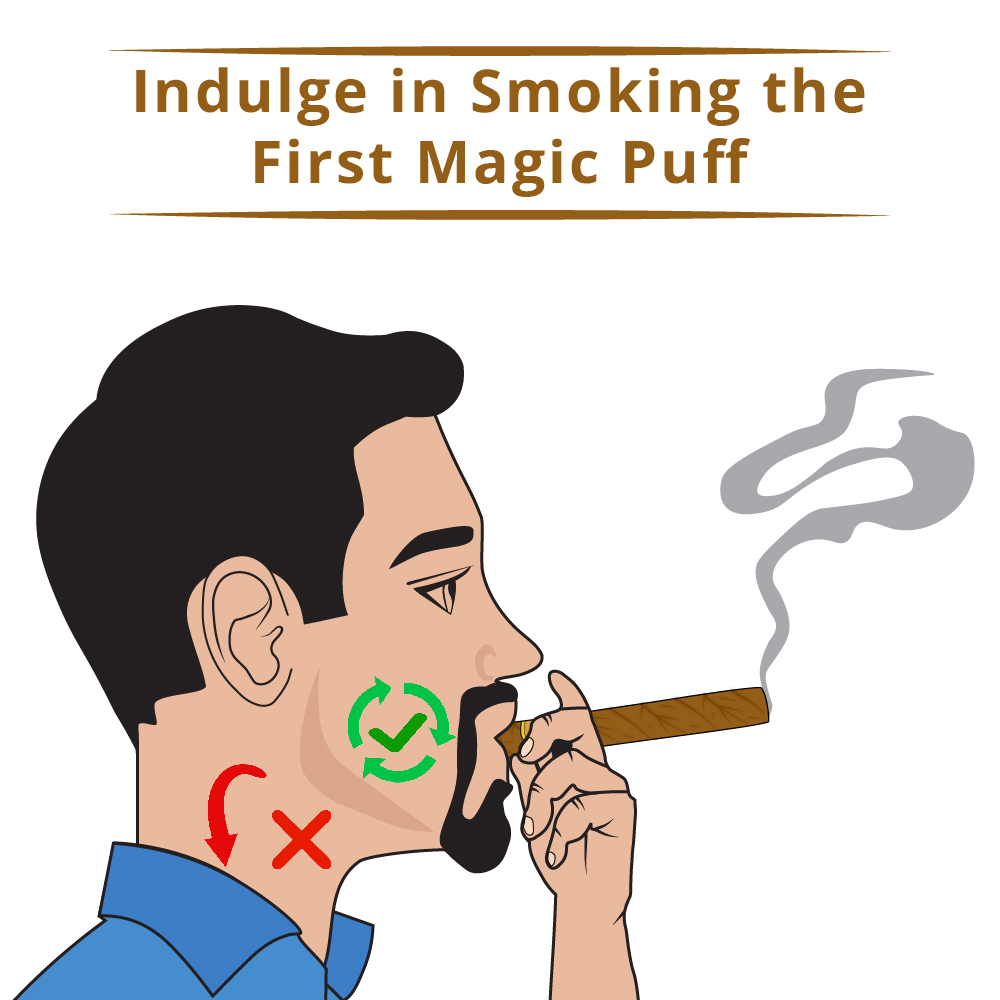
When lit correctly, the virgin puff delivers a multitude of flavors to relish. It’s the moment to fully enjoy your stogie.
This is then as the cigar maker intended. It’s a good idea to verify the ember is even too.
There should also be a darkened rim around the entire circumference. If either is present, these are indications that the cigar isn’t lit consistently.
Also, know that burning the foot of the cigar due to either rushing it or using the wrong lighter or matches will alter the taste of the cigar smoke and tobacco.
The virgin puff is how you know if it’s done right or incorrectly.
Pros & Cons of Using the 4 Different Lighters to Light a Cigar
As a cigar smoker, knowing the best way to light a cigar can create improved outcomes.
Indifferent results can lead to some parts of the cigar’s foot burning faster than others.
This makes it inconvenient to fix the problem while trying to smoke your fine cigar.
Sometimes, the way to light a cigar depends on where you’re presently located. For example, being outdoors, some flame lighters aren’t ideal.
Also, in windier conditions, wooden matches can provide a new challenge.
Bear in mind that lighting a cigar like a gentleman requires time and patience. It certainly needs a few minutes to do it properly.
Subsequently, the choice of lighting method matters because you’re not using a basic Bic lighter to ignite a cigarette in a couple of seconds.
Light a Cigar with Butane Torch Lighter
A butane torch lighter can be the big and flashy type.
For the more flamboyant cigar aficionados, some want to make a real show of it with a five-jet burner.
It is a solid choice for lighting a cigar outdoors.
However, any wind may increase the difficulty of maintaining the flame.
The trouble with the above approach is that it’s overly hot and likely to burn the foot of the cigar.
That will then badly affect the taste of the tobacco, its unique flavors, and even the taste of the smoke too.
This impairs even premium cigars.
Instead, use moderation.
The greater the number of jets on your lighter and the hotter it is, the greater distance it should be from the end of your cigar.
Several inches away is necessary to gradually warm the cigar, rather than virtually setting it on fire!
Light a Cigar with a Soft Yellow Flame Lighter
Former cigarette smokers are familiar with the accessible Bic lighters.
Lighters such as these are soft flame versions.
They’re naturally hot and can badly singe a cigar when holding the flame too close to the cigar’s foot.
With that said, if you have a nasty tendency to burn cigars, then the soft yellow flame is safer to use.
The downside with the yellow flame is that it goes out too easily when outdoors.
You may need to secure behind a building’s support pillar or some other temporary wind block to take the necessary minutes to light your cigar successfully.
Using the yellow flame, it’s necessary to purposely rotate the cigar to get more even lighting around the full circumference.
Once you think that you’ve got it, turn the cigar around and lightly blow on the end of it from a distance of a few inches away.
This will light the end up and confirm any parts that aren’t successfully lit.
Light a Cigar with Wooden Matches
There are occasions when you cannot find your lighter or, unfortunately, you are left without gas inside.
In this case, you’ll be happy to have a box of wooden matches available at that moment.
Matches to light a cigar should be different from ones used on a cigarette. Because cigarettes can be lit quickly, the type of match matters less there.
However, with cigars, the match needs to remain lit for a considerable time to move through the entire lighting process.
To that end, cedar matches are much preferred over other types, such as sulfur.
The trouble with sulfur types is that they can transfer their taste to the cigar, as we mentioned earlier.
One trick to getting around it is to light the sulfur match and wait until that part has burnt through before using it to light the cigar.
But, honestly, that’s a pain to do.
Using extended cedar matches is far better. They have an appealing odor as they burn.
Being elongated, they’re designed to burn for longer making them more suitable for cigar lighting.
A few long-time cigar lovers won’t use anything else but cedar matches to light their cigars.
Maybe you’ll smoke this way too?
Light a Cigar with Cedar Spills
A cedar spill is a thin piece of cedar wood. These may get used occasionally because they’re found inside cigar boxes.
For convenience, some cigar smokers pull out the cedar insert and then tear a strip off to light that.
One word of warning here.
You’re essentially lighting a thin piece of wood on fire. It’s not expressly designed for that task – unlike a box of matches.
Therefore, it can burn in surprising ways. If you’re not careful, it could pose a fire hazard.
Some people prefer this approach to light their cigars because it’s cheaper and doesn’t require burning fuels which can sometimes alter the cigar’s taste profile.
Things to Consider When Lighting a Cigar
Here are a few considerations for novice cigar smokers before lighting up.
At first glance, you may perceive these as not-so-important segments in this precious ritual.
However, let us ensure you that they make or break your entire experience.
Avoid Lighters with Noxious Gases
Zippo lighters are popular for lighting cigarettes. However, they’re a poor choice to light a cigar.
They let off noxious gases, which should be avoided.
The residue from the liquid fuel will change the taste of the cigar.
It’s possible to let them burn for a few seconds to allow the gas to dissipate and then use them to light a cigar.
But as a lighting option, they still make for a poor choice.
Butane gas lighters are fine when used sensibly, as described earlier.
Let the Ash Burn
Premium cigars have ash that burns whiter rather than a greyer hue.
The other tell-tale sign of a better-quality cigar is that the ash adheres to the end of the cigar for longer too.
Therefore, it’s less likely to drop off unexpectedly onto a guest’s carpet, for instance.
Be aware of your surroundings.
Dropping ash unexpectedly on your home’s carpet might not be a major issue if it’s worn and soon to be replaced anyway.
However, should that happen elsewhere, it could ruin someone else’s new carpet, rug, or polished hardwood flooring.
As such, while you may let ash burn for longer at home, be sure to have access to an ashtray if you’re elsewhere.
Then gently tap off the ash regularly to avoid it becoming too long.
Properly Relight a Cigar
Relighting a cigar isn’t as much talked about, but it’s not a bad thing.
When neglecting to smoke your cigar every few minutes, it’ll eventually go out of its own accord.
Old cigars that were previously partially smoked should not be relit.
However, if it’s within a couple of hours of being smoked last, then relighting it is fine.
The full taste of the tobacco should still come through.
To relight the cigar, you’ll need to remove any ash or gas that’s present at the foot from the last time the cigar was smoked.
This is achieved by lighting the foot and gently blowing out to encourage remnants to escape.
It may require a couple of tries to get the hang of it.
Fix Uneven Burning Along the Way
When a cigar hasn’t been wholly lit all the way around, it will be faster in some areas and slower in others. This is because the heat level is not the same.
When this occurs, there’ll be a burning streak along one side, so you’ll be able to tell.
Knowing that the part of the cigar that’s uppermost and pointing to the sky or ceiling will naturally burn faster is helpful here.
You can correct or control to evenly burn by rotating the cigar away from the part that’s getting ahead of other sections.
Also, when the slower or poorly lit section of the cigar needs a nudge, apply a flame to that area to warm it up. This will increase its burn speed.
Gently Put Out the Cigar
Extinguishing a fine cigar is different from with a cigarette. It’s important to remember that.
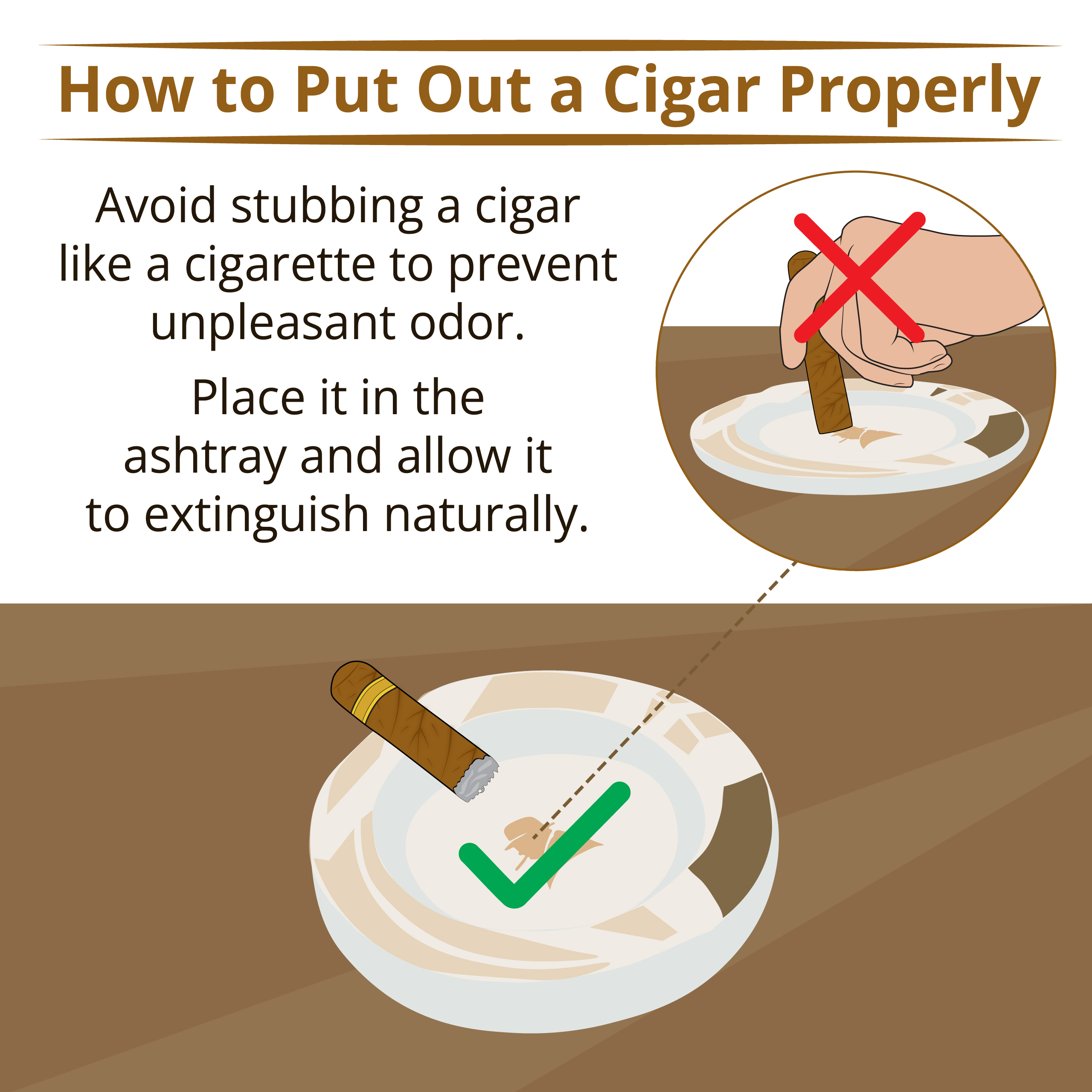
Do not stub it out in an ashtray; it creates an unpleasant odor that’s entirely avoidable.
Instead, use a cigar-sized ashtray, and lay the cigar appropriately across it. Without drawing on the cigar, it will naturally go out within a few minutes on its own.

